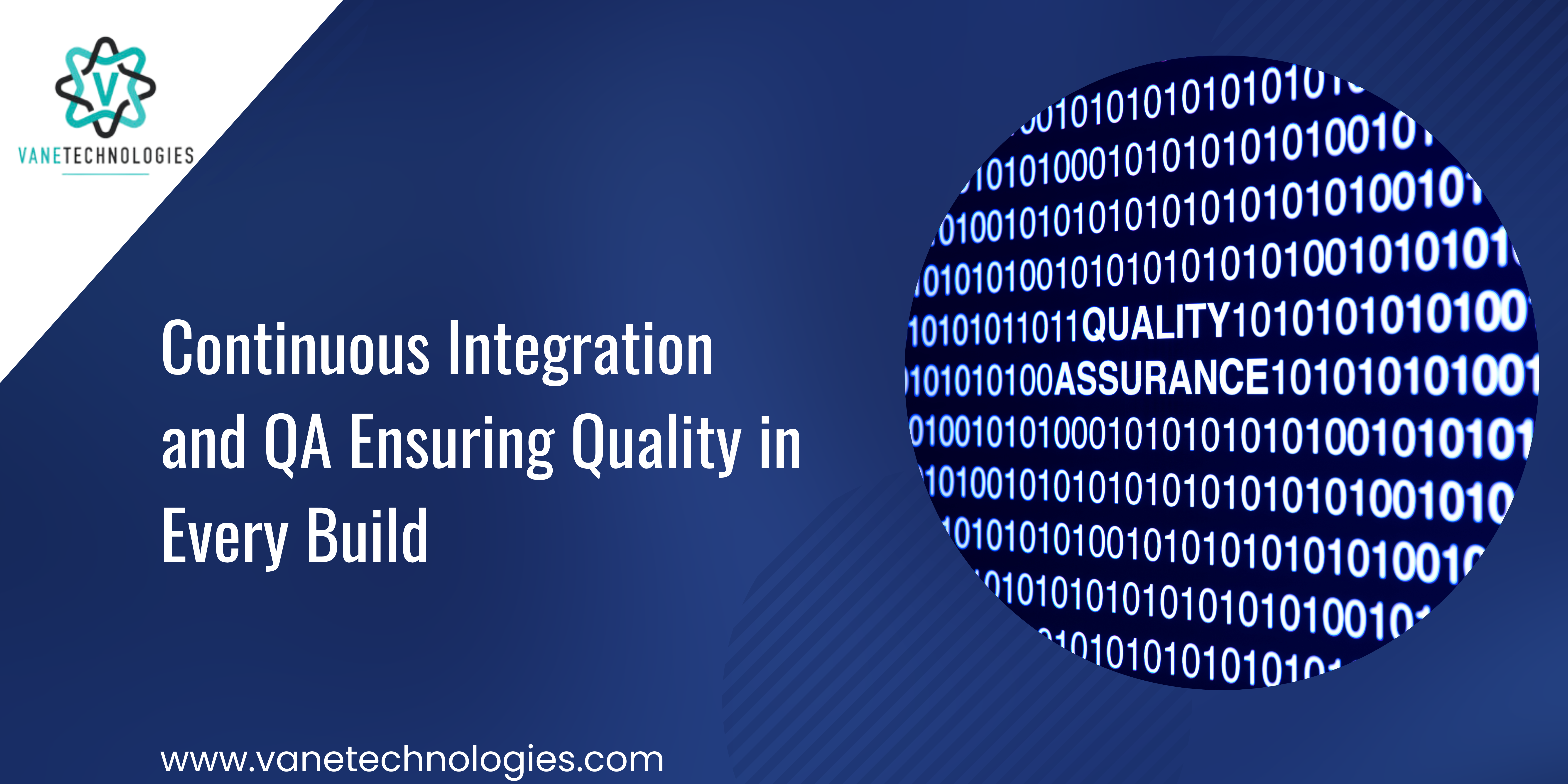
BLOGS

🔄🛡️Continuous Integration and QA: Ensuring Quality in Every Build
In today's fast-paced software development environment, delivering high-quality products quickly and efficiently is paramount. Continuous Integration (CI) and Quality Assurance (QA) play crucial roles in achieving this goal. By integrating code frequently and verifying it through rigorous testing, teams can identify and address issues early, ensuring that every build meets the highest quality standards.
🔄 What is Continuous Integration?
Continuous Integration is a development practice where developers integrate code into a shared repository frequently, often multiple times a day. Each integration is then verified by an automated build and testing process, allowing teams to detect problems early.
Key Benefits of Continuous Integration:
🛠️ Early Detection of Errors: By integrating and testing code continuously, developers can identify and fix issues soon after they are introduced, reducing the time and cost associated with fixing bugs later in the development cycle.
🔗 Reduced Integration Problems: Frequent integration minimizes the risk of complex integration problems that can occur when merging changes at the end of a project.
🤝 Improved Collaboration: CI encourages collaboration among team members, as it ensures that everyone is working with the latest version of the codebase.
⚡ Faster Feedback Loop: Automated builds and tests provide immediate feedback to developers, enabling them to address issues promptly and keep the project on track.
🛡️ The Role of Quality Assurance in CI
Quality Assurance is a systematic process designed to determine whether a product or service meets specified requirements. In the context of CI, QA involves rigorous testing at multiple stages of the development process to ensure that the codebase remains stable and high-quality.
Key Aspects of QA in CI:
🤖 Automated Testing: Automated tests are crucial in CI, as they provide a quick and consistent way to verify the functionality of the code. This includes unit tests, integration tests, and end-to-end tests.
🔄 Continuous Testing: Continuous Testing extends automated testing by integrating testing into the CI process. This means that tests are run every time code is committed, ensuring that new changes do not introduce regressions or other issues.
📊 Test Coverage: High test coverage is essential to ensure that all critical parts of the code are tested. This includes not only functional tests but also performance, security, and usability tests.
📝 Test-Driven Development (TDD): TDD is a practice where developers write tests before writing the corresponding code. This approach ensures that the code meets the desired specifications and helps prevent defects from being introduced in the first place.
🚀 Continuous Delivery and Continuous Deployment
While CI focuses on integrating code and running tests frequently, Continuous Delivery (CD) and Continuous Deployment take this a step further by automating the release process, ensuring that software can be released to production at any time.
Key Components of Continuous Delivery and Deployment:
🔄 Automated Deployment Pipelines: Deployment pipelines automate the steps required to release software, including building, testing, and deploying to various environments.
📅 Release Management: Effective release management practices ensure that releases are planned, coordinated, and executed smoothly, minimizing disruptions.
🔙 Rollback Mechanisms: Implementing rollback mechanisms allows teams to revert to a previous version of the software quickly if issues are detected after deployment.
📈 Monitoring and Feedback: Continuous monitoring of the application in production provides feedback on its performance and helps identify issues early.
🌟 Best Practices for Implementing CI and QA
To effectively implement CI and QA, teams should follow these best practices:
📂 Maintain a Single Source of Truth: Use a version control system (VCS) to manage the codebase, ensuring that all changes are tracked and can be reverted if necessary.
🔧 Automate the Build Process: Automate the build process to ensure that it is consistent and reproducible. This includes compiling code, running tests, and packaging the application.
💻 Use a CI Server: A CI server, such as Jenkins, Travis CI, or CircleCI, can automate the process of integrating and testing code, providing immediate feedback to developers.
👥 Implement Code Reviews: Code reviews help ensure that code quality is maintained by having multiple team members review changes before they are merged into the main codebase.
📊 Monitor Build and Test Results: Monitor the results of builds and tests to quickly identify and address any issues. Use dashboards and notifications to keep the team informed of the current state of the build.
🏆 Foster a Culture of Quality: Encourage a culture where quality is everyone's responsibility. This includes writing clean, maintainable code, adhering to coding standards, and prioritizing testing.
📈 Continuously Improve Processes: Regularly review and refine your CI and QA processes. Gather feedback from team members, analyze metrics, and look for ways to improve efficiency and effectiveness.
🔄 Retrospectives: Hold regular retrospectives to discuss what went well, what didn’t, and how processes can be improved.
📉 Metrics Analysis: Use metrics such as build success rates, test coverage, and deployment frequency to identify areas for improvement.
📚 Training and Development: Invest in training for your team to keep them updated on the latest tools, practices, and technologies in CI and QA.
🎯 Conclusion
Continuous Integration and Quality Assurance are essential practices for ensuring that every build meets the highest standards of quality. By integrating code frequently, automating the build and test process, and fostering a culture of quality, teams can deliver high-quality software quickly and efficiently. Embracing CI and QA not only improves the development process but also leads to more reliable and robust products, ultimately enhancing customer satisfaction and trust. Additionally, incorporating Continuous Delivery and Continuous Deployment practices ensures that software can be released to production smoothly and without disruptions, further enhancing the overall quality and reliability of the product
![]() 1200 Brickell Ave., Suite 1950 Miami, Florida, 33131
1200 Brickell Ave., Suite 1950 Miami, Florida, 33131
![]() 1654 Calle Tulipan, Suite 100 San Juan, Puerto Rico
1654 Calle Tulipan, Suite 100 San Juan, Puerto Rico
![]() Manquehue Sur 520, oficina 205 Las Condes, RM, Chile
Manquehue Sur 520, oficina 205 Las Condes, RM, Chile






